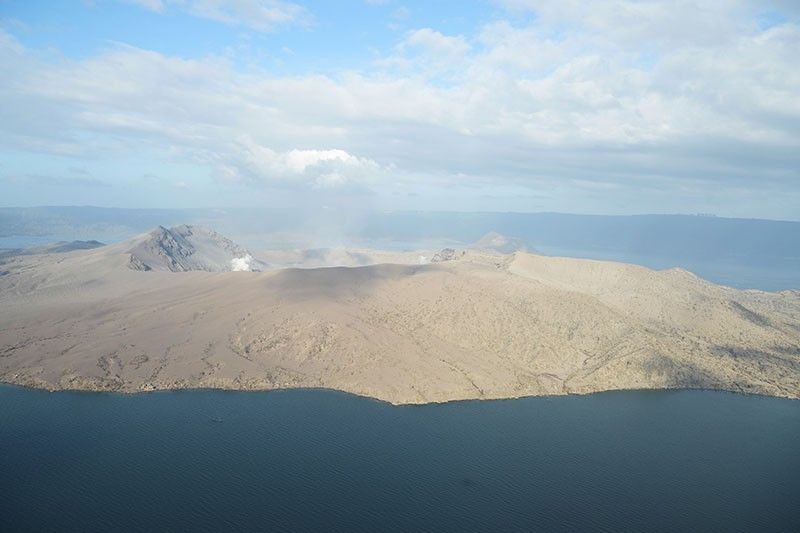Taal still a threat despite drop in sulfur dioxide emissions, lower volcanic activity

MANILA, Philippines — Taal Volcano is still at risk of a major eruption, state volcanologists said, despite weaker steam emissions, fewer volcanic earthquakes and lower sulfur dioxide emissions in the past few days.
The volcano in Batangas belched steam-laded plumes that were 50 to 500 meters high for the past 24 hours, according to the Phivolcs bulletin issued Wednesday morning. The steam emissions were lower than the 500- to 600-meter ash columns recorded the previous day.
The sulfur dioxide emission of Taal also went down to an average of 153 tons per day from the previously recorded average of 344 tons. Sulfur dioxide is a colorless gas that irritates skin, eyes, nose and throat.
“Di porket bumaba ang sulfur dioxide ay safe na tayo dahil pwedeng nababarahan lang ang labasan ng sulfur dioxide. Pwedeng nanigas na ‘yung ibabaw ng magma at hindi na makalabas ‘yung sulfur dioxide,” Ma. Antonia Bornas, Phivolcs volcano monitoring division chief, said.
(It doesn't mean we are already safe just because the sulfur dioxide emission dropped. Probably the vent where the gas comes out is just blocked. Or maybe magma hardened and the gas could not come out.)
Meanwhile, only six volcanic earthquakes with magnitudes between M1.5 and M2.4 were recorded by the Philippine Seismic Network from Tuesday to Wednesday morning. This brings to 725 the total recorded tremors since Taal began erupting to life on the afternoon of January 12.
The Taal Volcano Network, which can record smaller tremors, plotted 481 earthquakes, including eight low frequency events for the past 24 hours.
This still means that there is continuous magmatic intrusion underground.
“‘Yung mga earthquake ay unti-unting nag-diminish pati ‘yung low frequency events pero di ibig sabihin ay kampante na tayo. Ibig sabihin may nakadaan nang magma. Ano ‘yung gagawin ng sumampang magma? That’s the problem,” Bornas said.
(The occurrence of earthquakes and even low frequency events is gradually diminishing but it doesn't mean that we should be complacent. It just means the magma has already passed through. What is its next step? That's the problem.)
Alert Level 4 remains in effect, which means a potentially catastrophic eruption is still possible within hours to days.
Bornas said the agency is evaluating the probability that volcanic activities are diminishing.
“Pag ito ay tuloy-tuloy ang trend, magsa-stand down tayo sa next alert level ngunit di ibig sabihin na pabalikin lahat. We will not recommend that,” she said.
(We will stand down to the next alert level if this trend continues. But we will not recommend to allow all the affected communities to go back to their homes.)
Over 39,000 families or nearly 148,987 individuals are seeking temporary shelters in evacuation centers.
- Latest
- Trending
































